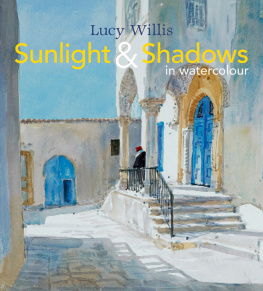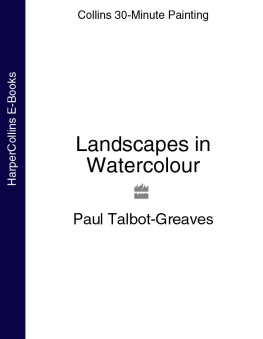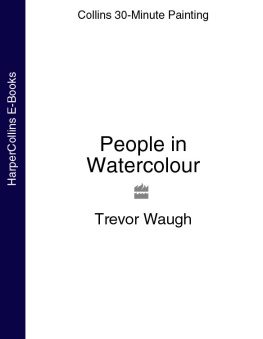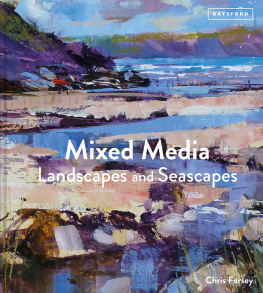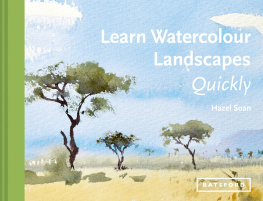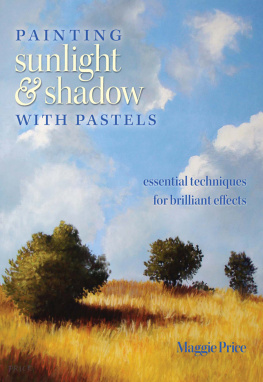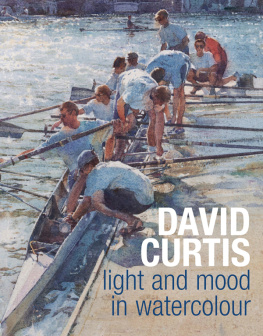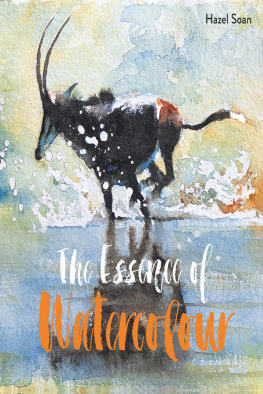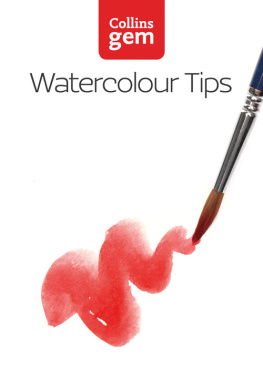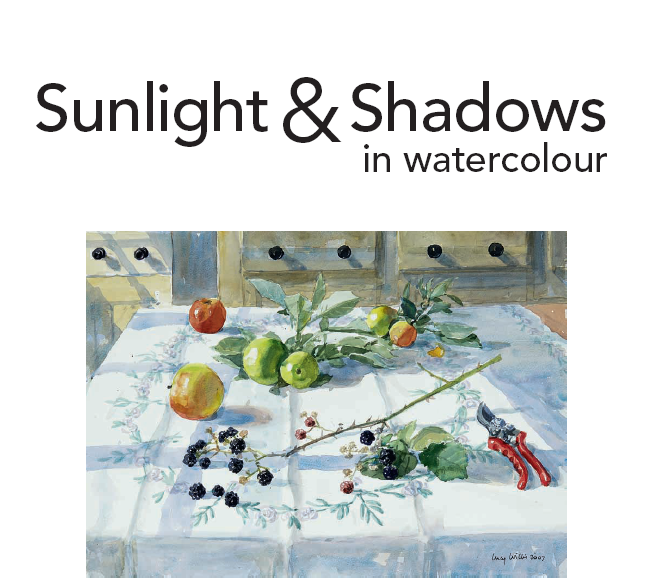
Blackberries and Apples 41 x 56 cm (16 x 22 in).

Cretan Shadows, Greece 38 x 28 cm (15 x 11 in)


Contents
Introduction
As I was hunting for examples of early shadow drawings to include in this book, I realized that I have been painting in watercolour for 40 years. I left art school in 1975 and although I have continued to work with the other media in which I was trained oil painting, drawing and printmaking it was then that I started to experiment with watercolour.
This was also a time in my life when I had started travelling abroad to paint. In 1973, as a student, I made my first trip to the Greek islands and took with me not watercolours but a large canvas bag of oil painting equipment. I loved the experience of painting abroad, soaking up the new visual stimuli, but the resulting oil paintings were a problem. I couldnt pack them up and move on to the next island before they were dry, some pictures became stuck together and I didnt know what to do with the remaining blobs of paint on my makeshift palette. But in spite of this, as a little oil painting from ), I was already interested in trying to pin down the sunlight and shadows. It was only when I went to live in Greece in 1976 that I started to use my watercolours in earnest to express this interest.

North Curry Churchyard, England
36 x 56 cm (14 x 22 in)
The patterns cast by shadows on the ground are as important in this painting as the tree, the buildings and the leaves in the foreground.
In the years that followed, both at home in England and on trips abroad, I developed my own particular technique, never having been taught watercolour by anyone else. It is this technique that I shall attempt to explain so that, with practice and experimentation, you can use it as a guide to developing your own distinctive style.
It was probably the pragmatic reasons the ease with which I could carry my watercolour equipment, the speed at which I could work on a painting and then pack it away that determined my choice of the medium that eventually took centre stage for me. I have loved the way that watercolour works: its special qualities of versatility, its strength and its subtlety and the way, after 40 years, I still discover new things each time I paint.

The Abandoned Villa, Syros, Greece
Oil on paper 35 x 45 cm (13 x 17 in)
When I recently unearthed this oil painting from 1973 I was surprised to see that I was as keen then to capture the effects of sunlight and shadows as I am today.
One intriguing aspect of shadows, particularly those cast by strong sun, is that they impose striking patterns onto our familiar world. It seems that our brains have evolved to deal with this and we think nothing of it. Only when you come to paint the effect that light has on our surroundings do you realise how extreme and complicated the changes are when the sun comes out. I still take delight in analysing these changes and making visual order out of the apparent chaos of shadows.
The pictures in this book were painted around my home in England and on my travels to other countries. In 1990, after the publication of my first book about painting, I was asked by The Artist magazine to take a group on a painting holiday abroad. Since then I have led 15 trips to some widely differing locations. My most recent book, Travels with Watercolour, also published by Batsford, includes many of the paintings from those trips, and this book contains a further selection. I have been immensely fortunate to paint in some especially interesting regions of the world: in China as it started opening up to the West, in Syria just before the civil war, and in remote corners of India, Zanzibar and the Yemen.
Yet as I always remind myself, and I hope these pages will show, its not necessary to go far to paint light and shadows. Whether you are at home or abroad the challenge is the same: its a matter of seeing and understanding what is before you, and then being able to put on the paint. My explanations and demonstrations in this book will endeavour to show how this can be done.

Morning Shadows, Syros, Greece 29 x 41 cm (11 x 16 in)
The attraction for me here was not just the patterns of the architecture but the other more elusive patterns created by the play of the shadows across the structure.
CHAPTER 1
Foundations

The City of Stone, Valletta, Malta
57 x 76 cm (22 x 30 in)
Both the beauty and the bane of watercolour as a medium is its fluidity and transparency. Making a painting in watercolour is like walking a tightrope and juggling a multitude of balls in the air at the same time. The essential skills you need are mixing colour, adding the right amount of water, achieving depth of tone, organizing the composition, leaving white paper where you want the lightest tones, and all the while controlling the drying of the paint not too fast, not too slow. And all this is required before even considering the knotty problem of choosing a subject and dealing with the vicissitudes of changing light and shadow!
Drawing as the foundation for watercolour
The importance of drawing cannot be over-emphasized when it comes to learning how to use watercolour. When you are attempting a painting, the last thing you want is the necessity to make corrections because you have put something in slightly the wrong place. It is important to maintain freshness in your application of the paint, which you can achieve by applying an area of colour and then letting it settle and dry without disturbing it. You need to be confident and clear from the outset, keeping alterations to a minimum and not overworking your picture by applying too many layers.
Of course, an occasional correction is unavoidable but a firm grounding in drawing technique, well before you put paint to paper, will help to keep them to a minimum. It is the best foundation for starting out as a watercolour painter and essential for training your powers of observation.
I recommend the daily practice of some small drawing exercise a detail of your surroundings, or simply a cup on a table. Draw your subject with concentrated observation so that each exercise increases your ability to make an accurate rendition. While you probably do not want to paint purely accurate representations of the world around you, this rigour of drawing will give you the option to work in many different ways and the confidence to achieve your aim.
Next page
